Blue Shark Facts
- The Blue Shark ranks as the only known variety of shark that experts actually call (comparatively, of course) docile. In fact, since the year 1580, reports indicate only 13 shark attacks involving the Blue Shark.
- Sadly for the animal, however, it remains one of the most widely fished sharks in any ocean. Though its flesh seems technically edible, humans rarely consume it.
- Fishermen catch 20 million individuals of this species each year, with the flesh being principally used for fishmeal.
- Despite this terrible fact, the species still does not appear to be endangered. The reason is that, thankfully, it reproduces in vast numbers.
Related Articles
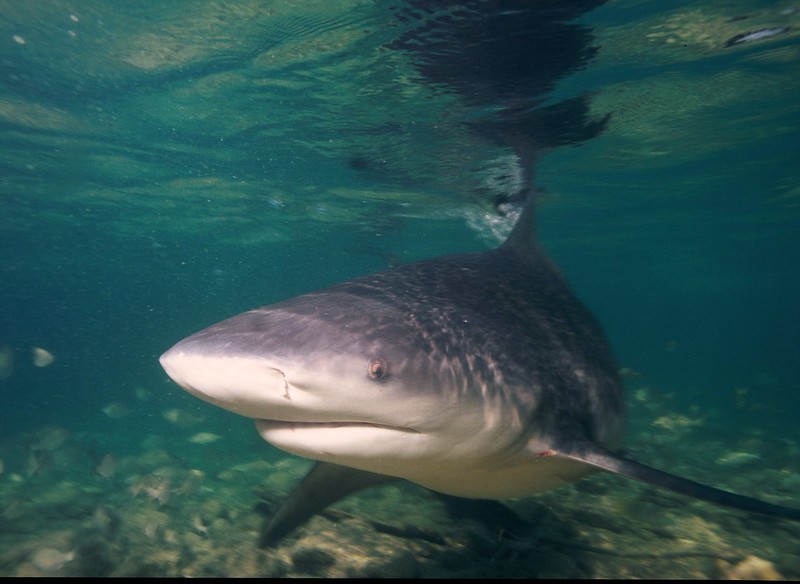
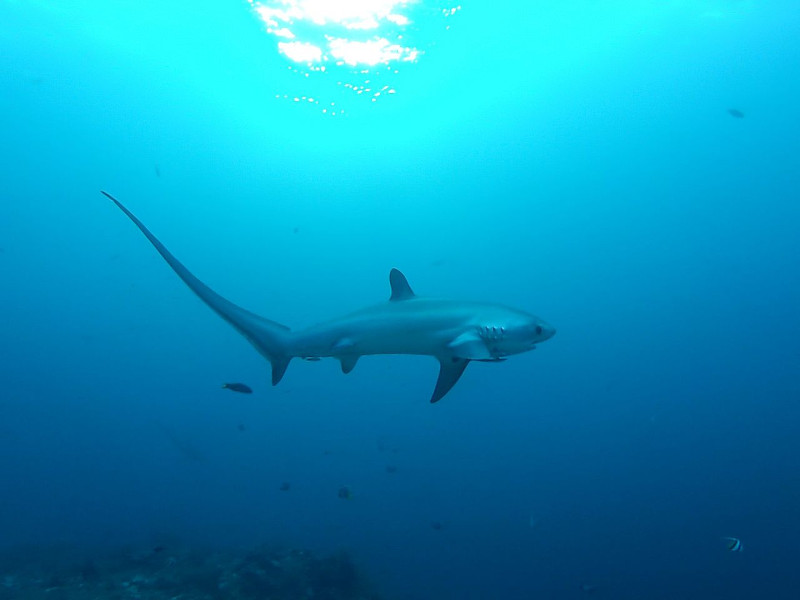

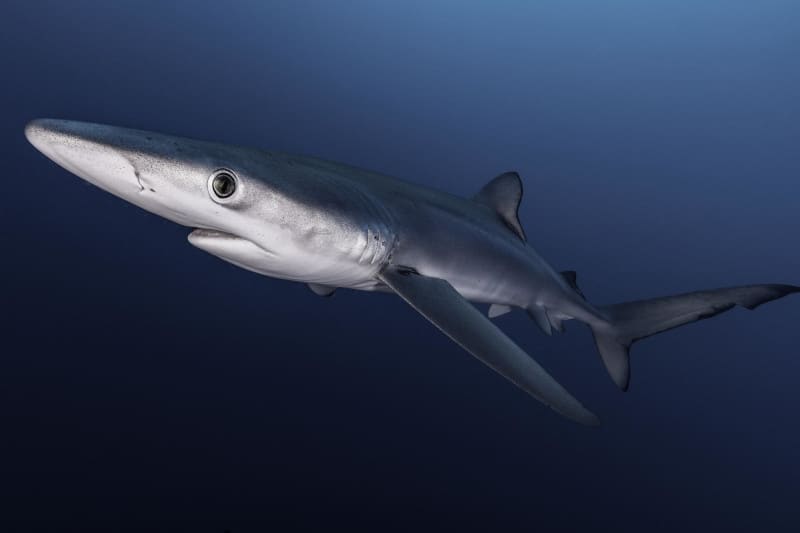
Blue Shark Physical Description
True to its name, the Blue Shark boasts a deep blue color on the upper body. Its sides display a lighter shade of blue, and the belly also typically shows white.
Like many related species, the animal also displays moderate sexual dimorphism, with the females being slightly larger than the males.
The male Blue Shark attains lengths of up to 9.3 ft (2.8 m), while the somewhat larger female only reaches 10.8 ft (3.3 m).
Not only do the females grow larger in this amazing species, they literally have thicker skin (3 times as thick to be exact).
- Kingdom: Animalia
- Phylum: Chordata
- Class: Chondrichthyes
- Order: Carcharhiniformes
- Family: Carcharhinidae
- Genus: Prionace
- Species: P. glauca
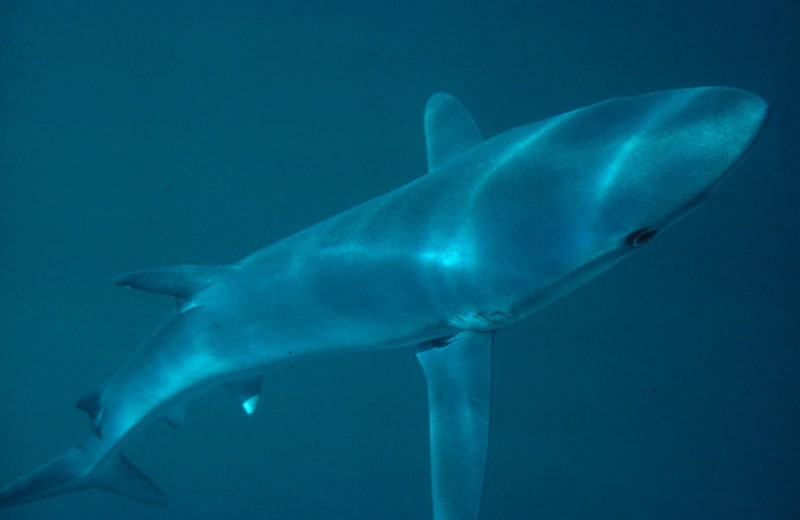
Blue Shark Distribution, Habitat, and Ecology
Most notably, the Blue Shark lives in most temperate and tropical regions, usually in deep water, at depths of as much as 1,150 ft (350 m).
This remarkable ocean creature also migrates enormous distances, sometimes as far as from New England, in the United States, to South America.
The animal also evolved a unique mating ritual in which the male repeatedly bites the female. This serves as the reason she evolved thicker skin for self-defense.
It evolved as a viviparous creature, so often gives birth to as many as 100 live young at one time. Its precise lifespan remains undetermined but estimates put it at 20 years.
This species feeds primarily on a variety of squid, but will also prey on other invertebrates such as lobsters, shrimp, cuttlefish, and crabs. Larger types of sharks form its only known natural predators.
Species Sharing Its Range
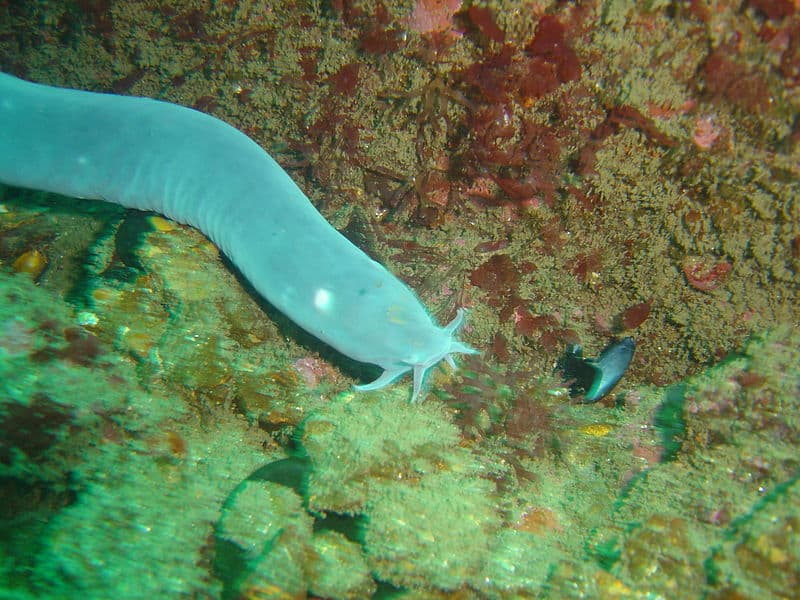
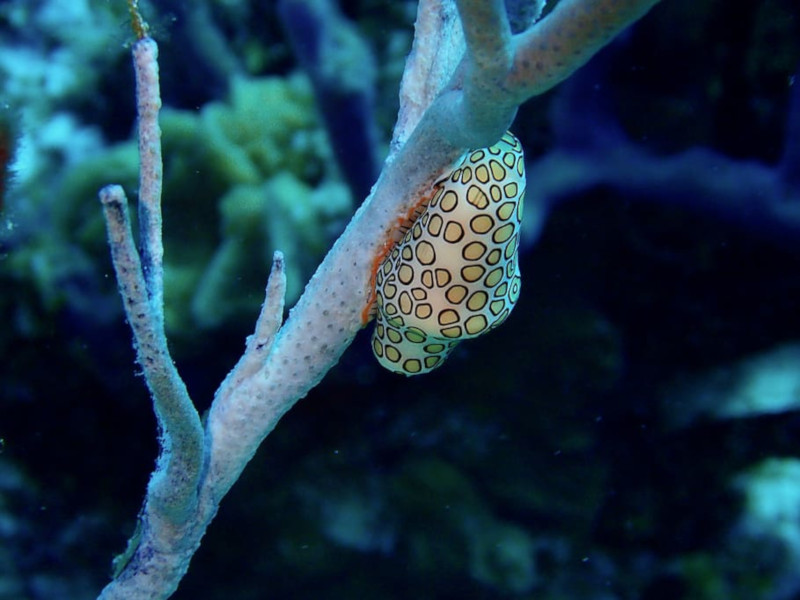
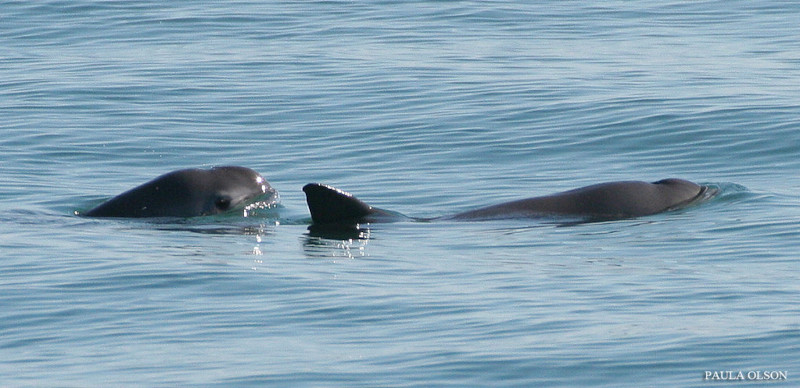
Check out our other articles on 4 Incredibly Intriguing Irises, Petra Iris, Victoria Falls, Honey Badger, African Monarch, Lau Banded Iguana, Wilson’s Bird-of-paradise, Hellbender Salamander
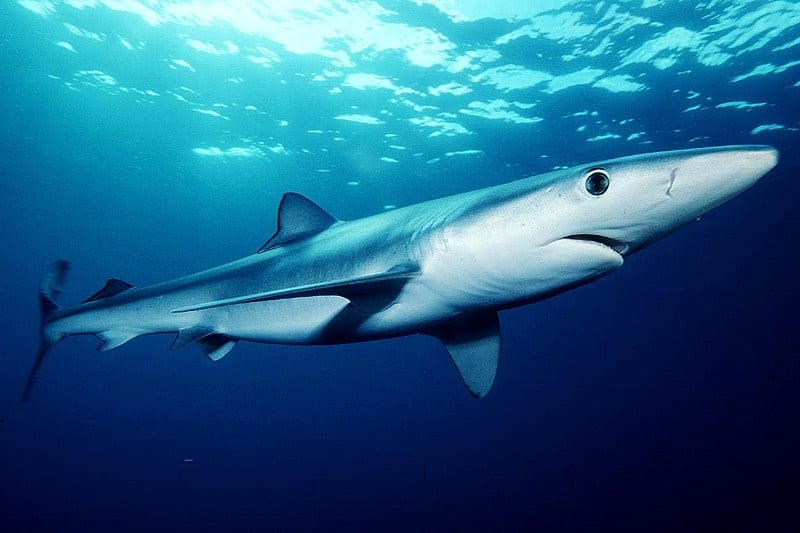









Leave a Reply